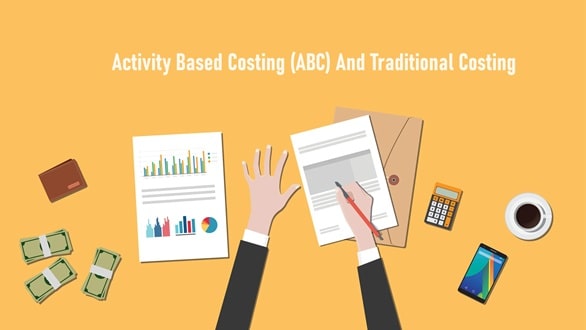Costing is a method to know what each product costs, which is kinda super useful if you think about it for a sec. See, if you only knew how much per product making will cost you, you can better optimize the other parts of the business and tweak things here and there. Well, most of it is done mainly for better profit margins, and when it comes to costing methods, there are actually two different main types. One is traditional costing and the other one is activity-based costing or ABC for short, you know? And today’s post is where we will get down to the actual differences between these two, so if you came here searching for just that, simply keep on reading. Here we go now.
Old-School Traditional Costing
Flipping the script, Traditional Costing is like the straightforward, less hassle way of dealing with overhead costs in manufacturing. It slaps on factory overhead to products based on something simple like how many hours of work or machine time went into them. This method kinda assumes that the more you make, the more cost there is going to be, you know? Easy to get rolling and lighter on the wallet, sure, but it might not hit the mark on showing the real deal about how resources are guzzled down by different products or services, especially when things get complicated.
Activity-Based Costing (ABC)
Alright, so let’s break down Activity-Based Costing, or ABC as the cool kids call it. Think of ABC like the savvy way to figure out what’s costing you bucks in your biz, way better than the old-school methods. It’s all about spotting that not all costs come from how much stuff you make but from the different chores you gotta do to get your product out the door, you know? We’re talking about things like getting your machines ready, handling orders from customers, and making sure everything’s top-notch quality-wise. So, how’s ABC do its thing? First off, it zeroes in on all the tasks needed to whip up your product or roll out your service. Next up, these tasks get lumped together into what’s called cost pools, and then we pin down what’s driving the costs (think machine hours, how many orders you’re juggling). After that, we crunch some numbers to figure out the cost for each task and divide it up into products or services based on how much they lean on these tasks.

Key Differences Between ABC And Traditional Costing
1. Basis of Cost Allocation
So, when we’re talking about how ABC and the old-school Traditional Costing do their thing, they’re like night and day. With ABC, it’s all about getting down to the nitty-gritty, figuring out what’s actually eating up your cash based on the real work getting done. It’s like, if you got two products that take the same time to make, but one’s a high-maintenance diva needing all sorts of extra checks and setups, ABC will surely catch that. It spreads out the costs based on what each product’s really demanding. Traditional Costing? It keeps it simple, maybe too simple. It just throws costs at products based on something straightforward, like how many hours were clocked in working on them. This might work in a perfect world, but let’s be real, not everything that costs you money is about how long it took to make.
2. Accuracy of Cost Information
Getting your costs spot on is super important for making smart moves in business. ABC can give you the full picture on where your resources are going for each thing you make or do. This way, you know exactly what’s costing you and can figure out how to price things or cut costs smarter. On the flip side, Traditional Costing is kinda like using a one-size-fits-all approach. It spreads out costs based on something broad, like how many hours were put in. But here’s the catch though, it can get things all wrong, especially if your overheads are chunky and don’t really tie back to how much work was done. You might end up making decisions based on some pretty off-base numbers.
3. Complexity and Implementation
Here’s where things get a bit tricky. Implementing ABC isn’t a walk in the park. You gotta dive deep into everything your business does, figure out what’s costing what, and keep track of it all. It’s a bit of a beast and needs you to really get what your business is about, plus it can be a bit of a drain on your time and wallet. But, if you’re up for it, the insights can be gold. Traditional Costing, though? Much easier to get off the ground. It’s straightforward and doesn’t ask for much, making it a good fit if you’re not looking to get too tangled up in the details or if you’re running something that’s not too complex.
4. Usefulness for Decision Making
You see, ABC gives you a peek into the nitty-gritty of costs, showing you which tasks and processes are eating up your budget and how they’re adding to the total cost of your products or services. This kind of detail is gold when you’re looking at key moves like setting prices, tweaking product designs, making your processes smoother, or figuring out which customers are actually worth the effort, you know? On the other hand though, traditional costing, with its big-picture view on costs, might be enough for some decisions, especially if you’re doing something straightforward.
5. Application in Different Industries
Choosing between ABC and Traditional Costing can also depend on the playground you’re in, business-wise. ABC is a game-changer in fields where overhead costs are through the roof and you’ve got a bunch of different products, services, and customers. On the flip side, Traditional Costing might still be your best bet in areas where everything’s pretty much the same and overhead costs don’t swing wildly with how much you produce.
Conclusion
That’s all there is for today. So now you can better understand when companies or businesses use traditional costing or ABC, and why, correct? Well, we hope that our today’s post helped you clear up your donuts about these two costing methods. Alright, we’ll see you in the next one.

Meet Suhas Harshe, a financial advisor committed to assisting people and businesses in confidently understanding and managing the complexities of the financial world. Suhas has shared his knowledge on various topics like business, investment strategies, optimizing taxes, and promoting financial well-being through articles in InvestmentDose.com


